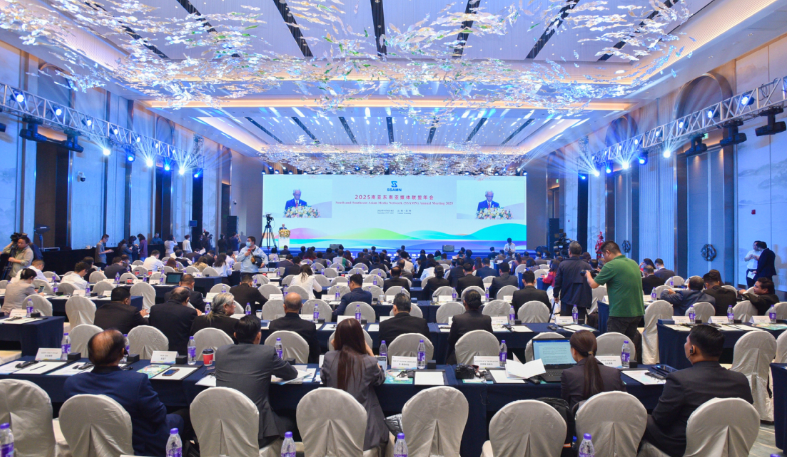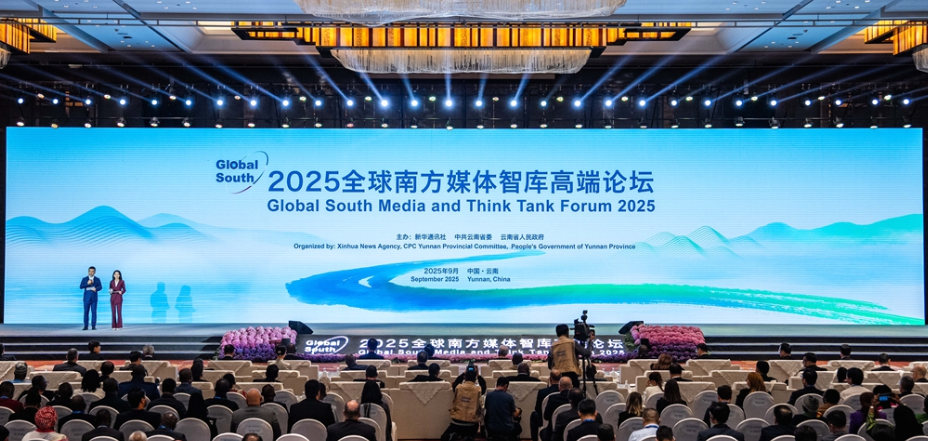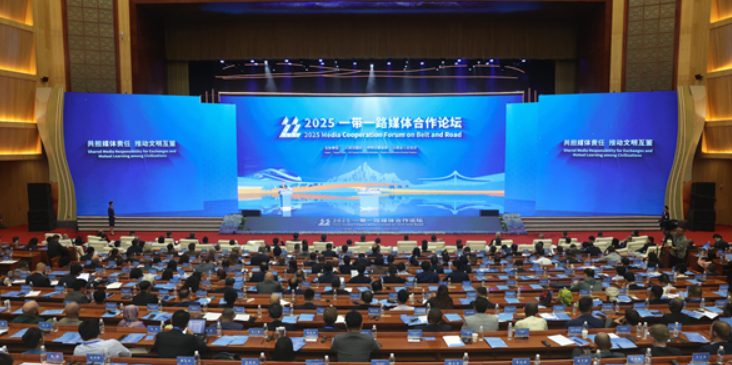Eric's Insight: What wind brings them to Yunnan?
In September 2025, the South and Southeast Asia Media Network Annual Meeting, the Global South Media and Think Tank Forum, and the Media Cooperation Forum on Belt and Road were held successively in Kunming, Yunnan province. Media representatives from around the world gathered frequently in this land of colorful clouds. So what kind of wind brought them here?

The South and Southeast Asia Media Network Annual Meeting 2025
The wind of openness and cooperation
Yunnan, China’s southwestern gateway and a key node in the joint construction of the Belt and Road Initiative, boasts access to a domestic market of over 1.4 billion people and connects to the international market of South and Southeast Asia with a population of 2.5 billion. The unique geographical location has endowed Yunnan with an innate openness and inclusiveness.
The wind of openness has blown along an ancient road, connecting Yunnan closely with the world. Over 2,000 years ago, Yunnan’s horse caravans, using tea as a medium, blazed the world-renowned Ancient Tea-Horse Road and pioneered the Southern Silk Road, one of the ancient international trade routes.
The wind has witnessed the determination of open-minded people, bringing Yunnan and the world into a tight embrace. 620 years ago, the Yunnan-born navigator Zheng He led fleets on seven voyages to the Western Seas (Indian Ocean), reaching over 30 countries and regions across Asia and Africa. Along the Maritime Silk Road, he left behind tales of friendly exchanges.
In recent years, Yunnan has served and integrated into the high-quality cooperation under the Belt and Road Initiative, fulfilling its role as the Chinese pivot of opening-up to South and Southeast Asia. In striving to develop itself, Yunnan has joined hands with the neighboring countries for progress, contributing to the Global South voice and growth.
Yunnan has aligned with the Regional Comprehensive Economic Partnership (RCEP), engaging in the Bangladesh-China-India-Myanmar Economic Corridor, the China-Indochina Peninsula Economic Corridor, and the China-Laos and China-Myanmar Economic Corridors. It has also participated extensively in multilateral regional cooperation mechanisms such as the Lancang-Mekong Cooperation and the Greater Mekong Subregion mechanism.
To date, Yunnan has established 12 bilateral and multilateral cooperation mechanisms with nine countries and formed 106 international sister-city relationships with 37 countries, 70 of which are with Belt and Road partner countries.
Since its launch nearly four years ago, the China-Laos Railway, which starts from Kunming, has served over 500,000 passengers from 115 countries and regions. Its freight services have covered 19 countries, transporting more than 3,300 types of goods. Yunnan has become a gateway for China’s opening-up to the South, and its path of openness continues to broaden.
"I have visited Yunnan more than 30 times and witnessed firsthand how the peovince has opened its arms to the world, continuously promoting cultural, educational, trade, and people-to-people exchanges with various countries," said Indrananda Abeysekera, Chairman of the Sri Lanka-China Social and Cultural Cooperation Association, at the 2025 South and Southeast Asia Media Network Annual Meeting.

The Global South Media and Think Tank Forum 2025
The wind with a 22°C coolness
In the just-concluded summer, many parts of China have seen persistent heatwaves. However, Yunnan, with its cool summer temperatures averaging at 22°C, has become a popular destination for short-term sight seers and long-term visitors alike, attracting tourists from across the country and its neighboring countries.
Data shows that in 2024, Yunnan welcomed over 6 million international tourists, 30% of whom chose to settle here long-term, becoming "new Yunnan residents." In the first seven months of 2025, more than 3.3 million people visited Yunnan for long-term stays, marking a 46.3% increase year on year.
Vincent, a young French urban explorer, fell in love with Yunnan and Chinese culture after experiencing life in various cities. He has now lived in Yunnan for a decade and is proudly married into the province.
American Brian Linden has settled in Xizhou, west Yunnan’s Dali, for many years and knows the local scenery and old friends like the back of his hand. Now he serves as a "villagers’ head" there.
Htike Lwin Ko, a Myanmar national, has been part of Yunnan International Communication Center for South and Southeast Asia. Now, he uses his camera and pen to share the story of the lifestyles that are “uniquely Yunnan."
The average temperature of 22°C has drawn countless international friends to Yunnan province. They are captivated by the 22°C breeze, the rich cultural diversity, and the vibrant local markets, arriving with curiosity and leaving with lasting impressions.
During the forums, participants also visited Kunming, Dali, Qujing, Wenshan, Honghe, and other places in Yunnan, experiencing media tours filled with historical depth and cultural warmth.
Charbel Barakat, Head of International Desk at Lebanon's Al-Jarida Newspaper, remarked, "We are captivated by the beautiful natural landscapes here, which represent a perfect blend of natural scenery and modern technology."

The 2025 Media Cooperation Forum on Belt and Road
What message does Yunnan convey to the world during the three media forums?
The wind of friendship. At the 2025 Global South Media and Think Tank Forum, Mu Shuyuan, head of the Chinese Yunnan medical team that participated in the earthquake relief efforts in Myanmar earlier this year, told touching stories from the rescue site, conveying the sincere Pauk-Phaw friendship.
This wind grew even richer during the international media gatherings. The Global South high-end forum released the Yunnan Consensus, which anchors friendship as its core tone by emphasizing on "mutual understanding and affinity." The launch of the Global South Joint Communication Partnership Network signified a deepening of friendship and trust.
The wind of being future-oriented. The forums held in Yunnan will influence the content and direction of future media cooperation, including jointly building a platform for sharing news and information, establishing long-term mechanisms for collaborative reporting, and conducting exchanges and training for media personnel.
Hani Wafa, Editor-in-Chief of Saudi Arabia's Al Riyadh Newspaper, said that the international forums will further strengthen media experience exchanges between Saudi Arabia and China, expand cooperation avenues such as co-production and technology sharing, and jointly provide stronger support for the high-quality cooperation under the Belt and Road Initiative.
The wind of media responsibility. During the three forums, friends from Belt and Road partner countries and Global South nations gathered in Yunnan for dialogue. Many participants voiced a sense of responsibility: the media must be steadfast guardians of peace and powerful promoters of development.
"Media are bridges for building trust and a key force for Global South countries to increase their and voice and discourse," said U Maung Maung Ohn, Myanmar's Minister of Information, at the 2025 Global South Media and Think Tank Forum. During the forum, Myanmar's Ministry of Information signed a letter of intent for cooperation with relevant departments of Yunnan province.
By sharing responsibilities and promoting mutual learning among civilizations, media professionals will help build a more just and equitable global governance system, allowing different civilizations to nourish one another and adding vibrant narratives to the human community with a shared future.
Writing by Zhang Ruogu, Han Chengyuan and Zhu Dongran; Trans-editing by Wang Shixue